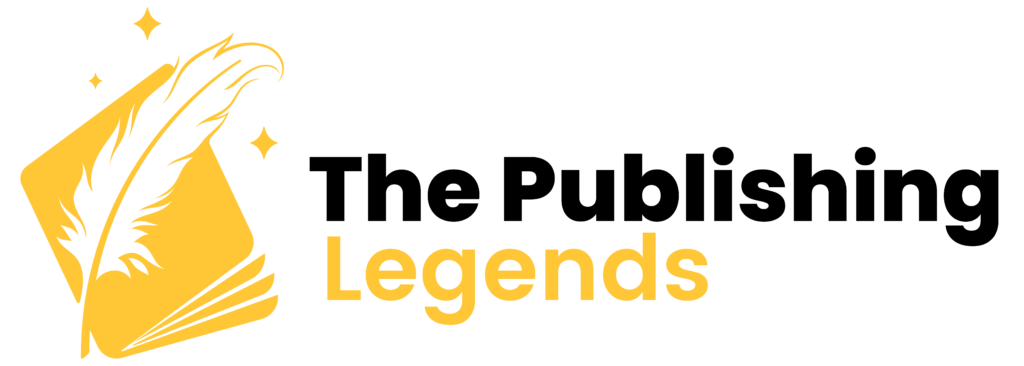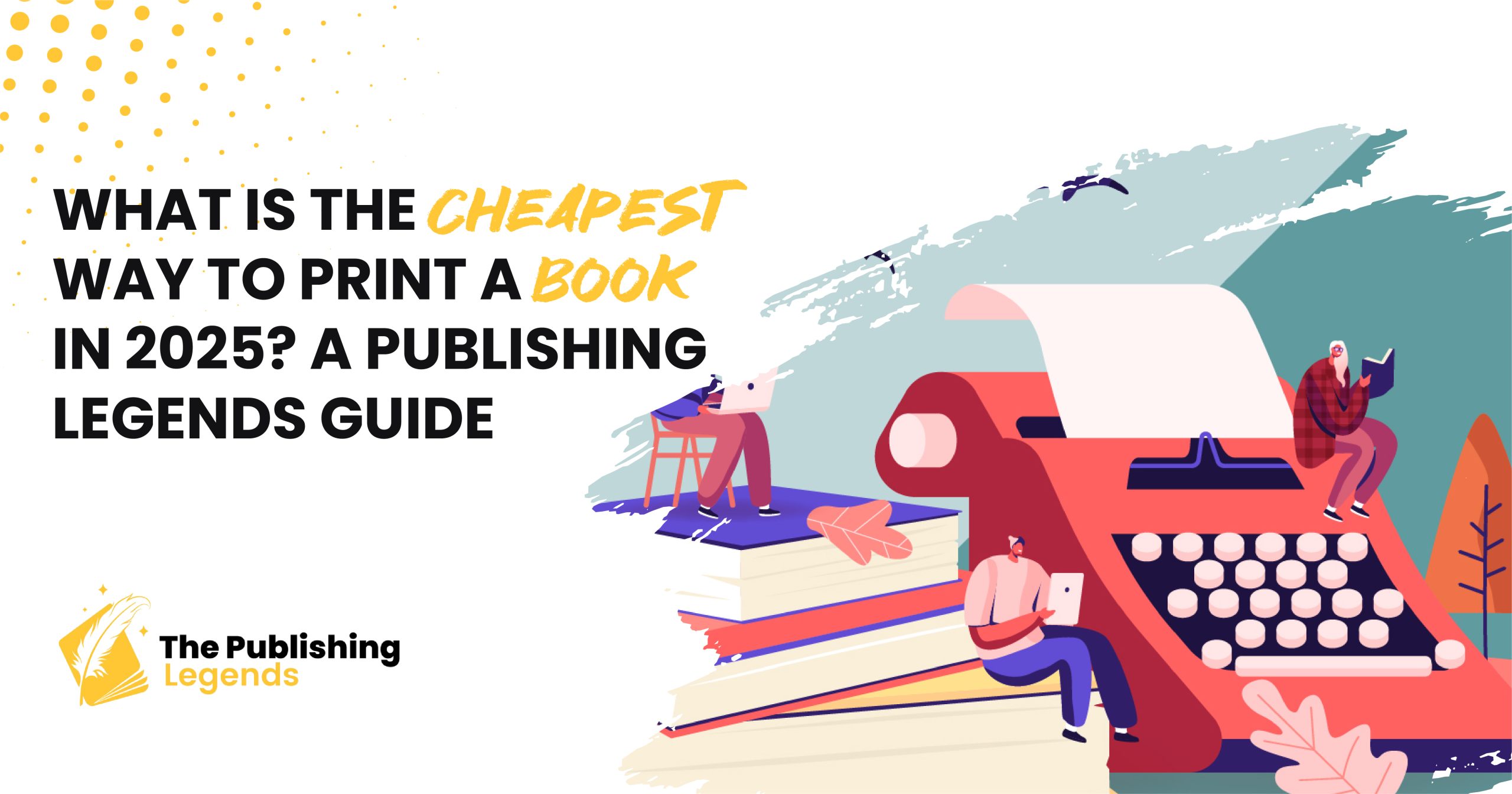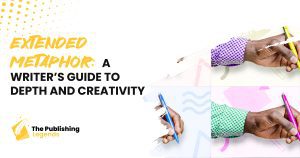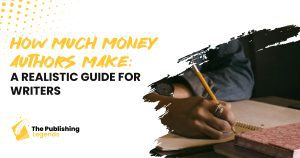In the world of publishing that changes constantly, one of the most common questions we at The Publishing Legends get asked by writers and aspiring writers is, and we quote, What is the cheapest method of printing a book? In 2025, the solution is not a single, one-size-fits-all solution, but a strategic mixture of knowing what you want to achieve, who you are talking to, and what the technological world has to offer. The older generation of offset printing is now long gone, and instead of having to use the only available process, it is now possible to use a wide range of methods and platforms, as each and every single one of them is incredibly cost-effective and versatile.
The least costly path taken by most small presses and independent authors depends mainly on the Print-on-Demand (POD) services. But offset print run, with careful planning, can be oddly economical to those with special requirements or an expectation of higher sales. So, we are going to decompose factors and considerations that affect printing prices and uncover the least expensive methods of printing your book in 2025.
Understanding the Core Printing Models
Before diving into specific tactics, it’s essential to grasp the two fundamental printing models:
Print-on-Demand (POD) Print-on-demand is a type of digital printing that can only print one book at a time when an order is made. Consider it as just-in-time production of books.
- Advantages: Low to no initial investment, no inventory to handle, rapid time-to-market, and suits a test of the waters or minor titles, and can be distributed in a large market via the large platforms.
- Cons: More expensive per-printed unit than large offset printing (runs), fewer options to customize the paper type and binding.
Offset: This is a very common and plate-based technique that applies to printing a large number of books. The ink is transferred to a rubber blanket via a printing plate and is then transferred or said to be “offset” onto the paper.
- Advantages: Much cheaper per-unit price on large runs, higher print and paper quality, maximum customization (special finishes, special paper stocks, custom sizing, special binding), and control over the end product.
- Cons: High upfront setup costs (for plates and press setup), requires a minimum order quantity (often 250-500+ copies), inventory management and storage responsibilities, and longer lead times.
The Cheapest Way: Print-on-Demand (POD) for Most
POD has won the race as the most economical method in self-publishing, especially by the larger number of authors who have indeterminate sales volume, in 2025. This is the reason and the way (how) to maximize your savings:
- No Up Front Investment: and this is the primary differentiator. In POD, you do not pay a cent till a client purchases your book. This obviates the cost of printing out hundreds or thousands of copies that may not be sold.
- No Cost of Inventory: You will not need to have a garage or a warehouse full of books that are unsold. All the printing, storage, and shipping of materials are done by POD providers straight to your readers.
- Worldwide Distribution: POD sites are connected to huge distribution channels. KDP instantly links you to the undoubtedly vast Amazon marketplace and Ingram Spark to more than 4000 retailers and libraries across the globe.
- The Best Way to Put the Waters: POD will enable you to determine the level of interest in the market without investing large amounts of your funds as an unpublished writer or trying out a new genre.
Strategies for Maximizing POD Savings:
- Common Sizes and Papers: Use conventional trim sizes (e.g., 6″ x 9″ for novels, 5.5″ x 8.5″ for memoirs) and paper weights (e.g., 50lb or 60lb uncoated white paper or cream paper for interiors). Your cost per unit to print will be huge with custom sizes or high-grade paper stocks.
- Black & White printing interiors: Keeping the cost in mind, unless your book is a children’s book, a cookbook, or an art book, choose black and white interiors printing. Color printing is much more costly. Whichever you may want or be forced to use colour, you may wish perhaps to use a few special places or an insert.
- Binding: The most cost-effective binding is perfect binding (or the standard glue-bound paperback). Hardcovers are durable, and they are seen as superior in quality, but they have much higher prices.
- DIY or low-cost Cover Design: A good professional cover is essential to sell, but it is possible to save on the initial creation cost by using free solutions such as Canva or by soliciting an emerging professional at a reasonable cost on platforms such as Fiverr or Upwork, as long as one makes sure to do it well. Several POD sites also provide simple design covers.
- Take Advantage of Free Formatting Tools: Most POD services provide free formatting templates and formatting tools to aid in writing your manuscript to print. This eliminates the cost of pro-formatters, but professional formats could make the reader experience more or less.
Want to print your book without breaking the bank? Let The Publishing Legends help you set up your Print-on-Demand book for global distribution. Explore our POD publishing services
When Offset Printing Becomes “Cheaper”
While POD is cheapest for minimal risk and small quantities, offset printing can become the more cost-effective option when you anticipate selling a large volume of books. The “break-even point” where offset becomes cheaper per unit than POD typically falls somewhere between 500 and 1,000 copies, depending on the book’s specifications (page count, color, binding, etc.).
Consider offset printing if:
- You are sure that you will make a lot of sales: You have a solid marketing strategy, you have pre-orders, or you know you will have many people ready to buy your product, the offset ordering scheme will help you to considerably decrease your cost per unit of sale.
- You require high-quality and customization: When dealing with art books, photography books, or a children books with lively illustrations, or any book where a sense of touch and appearance to the eye is essential, no other printing process could match the quality of print.
- Your sales will be made using conventional methods: Bookstores and libraries tend to order books that have a larger percent wholesale discount (and you can more readily afford to provide that discount by junk printing),
- You have specific binding or material needs: Offset printers offer a broader array of binding types (e.g., sewn binding for durability, custom dust jackets) and specialty papers that POD services often don’t.
Other Cost-Saving Considerations in 2025
Beyond the printing method, your book’s overall printing budget is significantly impacted by:
- Page Count: More pages increase costs. Aim for conciseness.
- Interior Color: Black & white is much cheaper than color.
- Paper Type/Weight: Heavier or specialty papers raise costs.
- Binding Type: Paperback (perfect bound) is the cheapest; hardcovers and specialty bindings are more expensive.
- Cover Finish: Basic matte/gloss lamination is standard; special finishes like spot UV or foil add cost.
- Proofing: Always order a physical proof to prevent costly errors.
Expecting high-volume sales or need premium print quality? Our team can help you plan a custom offset print run that maximizes quality and cost-efficiency. Get a personalized printing consultation
The Publishing Legends’ Recommendation for 2025
For most independent authors aiming for broad distribution and minimal financial risk, Print-on-Demand through platforms like Amazon KDP and IngramSpark offers the cheapest and most efficient way to print a book in 2025. Start here, especially for your first book. As your readership grows and you gain a clearer understanding of your market.
Frequently Asked Questions (FAQs)
Q1: Is it truly free to print a book with Print-on-Demand (POD) services?
A1: Yes, with no down payment on printing. POD services will only charge a print fee when a book is sold, and this fee will be deducted from your royalties. The out-of-pocket payment will only apply when you order some author copies. Nevertheless, you must remember that you should set aside money necessary to pay professional editors, cover designers, and those who can format your e-book, since these are not part of the publishing cost.
Q2: What’s the minimum number of copies for offset printing to be cheaper than POD?
A2: The cost of printing is higher or lower per book, depending on the book, but usually, offset printing costs more per unit when you order between 500 and 1,000 copies or more. Under that, POD does not require high setup costs, and is typically cheaper.
Q3: Can I use both Print-on-Demand and offset printing for the same book?
A3: Absolutely! A “hybrid” strategy is widely adopted by the writers. To keep it bare, you can use POD to go wide (e.g., through Amazon/IngramSpark) to take advantage of not needing any inventory. 1 Then, when needed (e.g., actual book signing/sale, special edition, etc.), order larger quantities via offset printing to qualify your per-unit costs better and a wider selection of touches.
Q4: Does a book’s size and page count greatly affect printing costs?
A4: Yes, significantly. Printing is usually more expensive when the document has more pages, a bigger physical size, and when color printing is used. Use regular trim sizes and be as concise as possible to reduce the number of pages in order to save money.
Ready to publish your book affordably and professionally in 2025? From layout to printing, The Publishing Legends offer complete support to make your publishing journey smooth and budget-friendly. Start your publishing journey today




